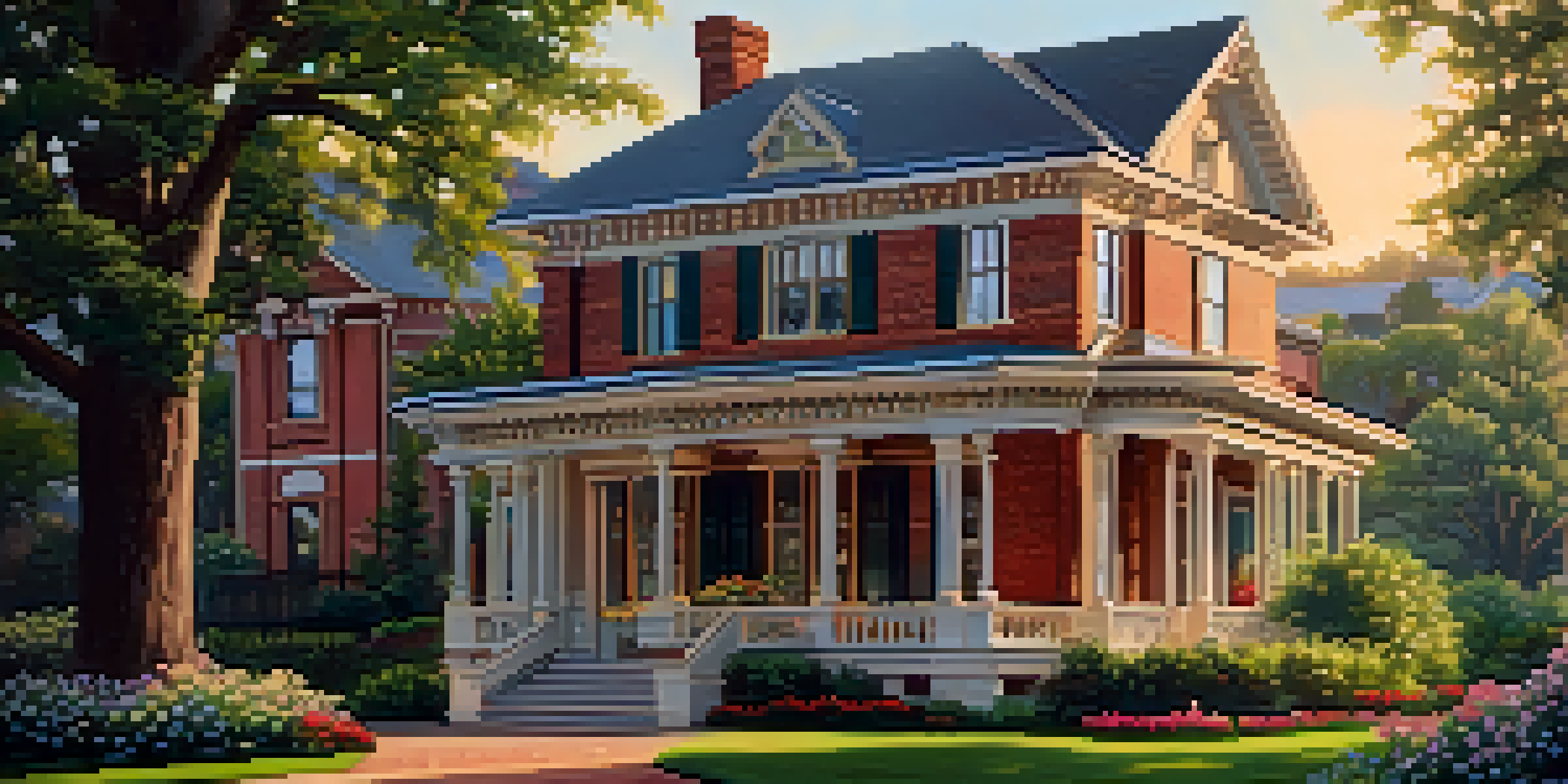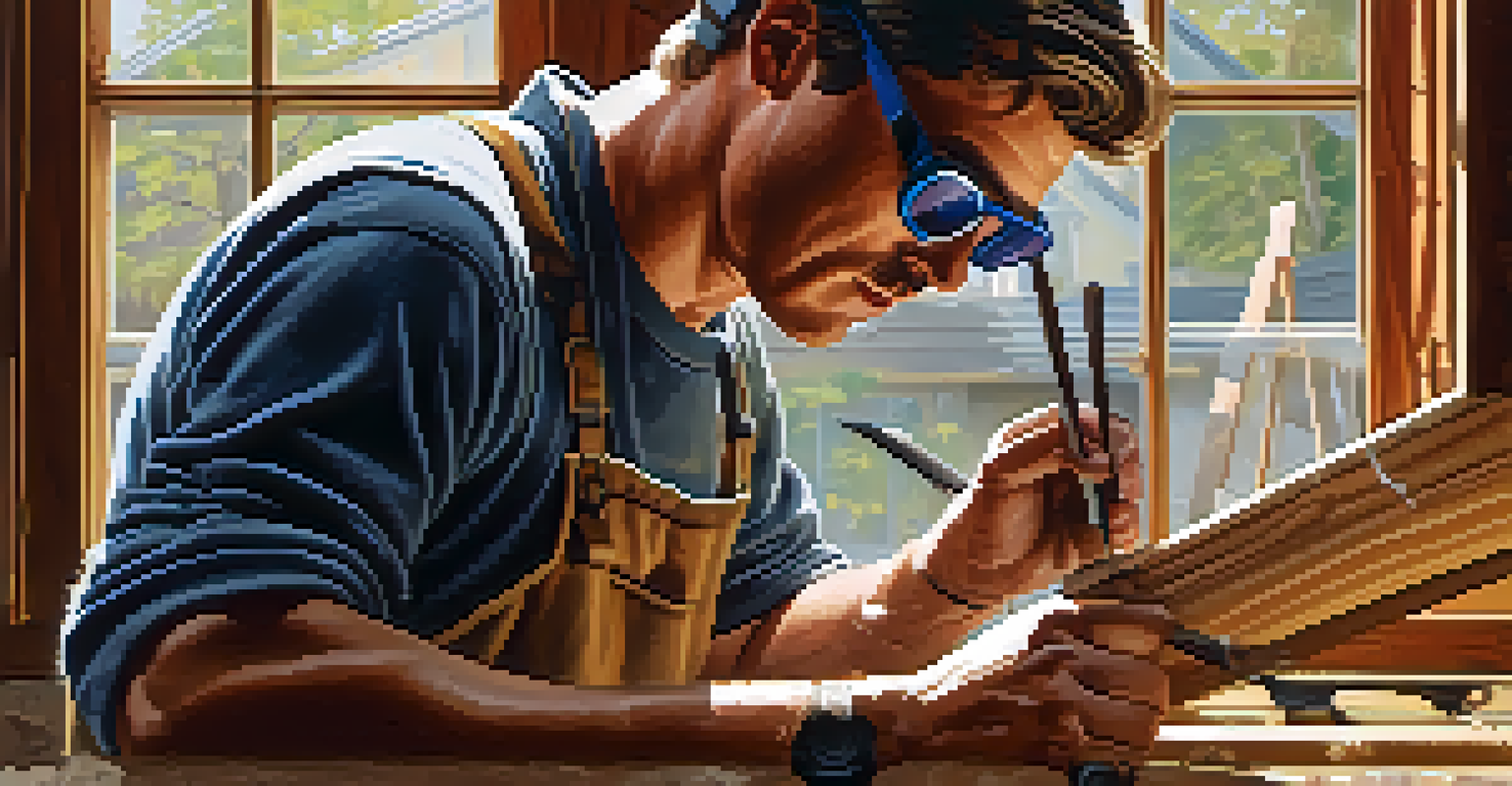Understanding the Cost Factors in Renovating Historic Homes

The Unique Appeal of Historic Homes and Their Renovation Costs
Historic homes boast a charm and character that modern houses often lack. However, this unique appeal comes with its own set of challenges, particularly when it comes to renovation costs. Homeowners are often drawn to the intricate details and timeless designs, but maintaining that original beauty can require significant investment.
Preserving our past is a way to make our future more beautiful.
Renovating a historic home involves not just fixing what's broken, but also preserving the elements that make the home special. This often means sourcing period-appropriate materials, which can be both costly and time-consuming. For example, finding original woodwork or restoring antique fixtures can lead to unexpected expenses.
Additionally, the need for skilled tradespeople who specialize in historic preservation can drive up labor costs. Homeowners must balance the desire to maintain authenticity with the practicalities of budget constraints, making it crucial to understand all associated costs before diving into a renovation project.
Understanding Local Regulations and Historic Preservation Laws
One of the primary cost factors in renovating historic homes is navigating local regulations and historic preservation laws. Many areas have strict guidelines to protect the integrity of historic neighborhoods, which can add layers of complexity to any renovation project. Homeowners may be required to obtain permits, which can come with fees and timelines that must be factored into the overall budget.

In some cases, homeowners might also need to hire consultants or architects who are experienced in historic preservation. This specialized knowledge can be invaluable but also adds to the cost. For instance, ensuring that renovations comply with the Secretary of the Interior’s Standards for Rehabilitation can be crucial for maintaining a home's historic status.
Ignoring these regulations can lead to costly fines or mandated restoration work that could have been avoided. Therefore, it's essential to fully understand the legal landscape surrounding historic homes before starting any renovation project.
Assessing Structural Integrity and Hidden Repairs Costs
When renovating historic homes, one of the first steps is assessing the structural integrity of the building. Older homes may have hidden issues like foundation problems, outdated electrical systems, or deteriorating plumbing. These hidden repairs can add significant costs that homeowners may not initially anticipate.
The best way to predict the future is to create it, but we must remember the lessons of our history.
For example, a seemingly minor issue like a leaky roof could indicate deeper problems, such as water damage or mold, which require extensive repairs. Conducting a thorough inspection can help identify these issues early, saving homeowners from larger expenses down the line. Engaging with a structural engineer or a qualified inspector can provide invaluable insights into potential costs.
Budgeting for these unforeseen repairs is crucial. Setting aside a contingency fund of about 10-20% of the renovation budget can help accommodate these unexpected expenses, ensuring that the project stays on track without financial strain.
Material Costs: Sourcing Authentic and Quality Supplies
One of the biggest cost factors in renovating a historic home is sourcing the right materials. Authentic materials, such as reclaimed wood, vintage tiles, or handmade bricks, can be significantly more expensive than their modern counterparts. However, using quality materials is essential for maintaining the home's historical integrity.
Homeowners often find themselves on a treasure hunt for salvaged items or period-specific fixtures. While this search can be rewarding, it's important to factor in both time and money. For instance, hunting down the perfect antique doorknobs might take longer than expected, leading to increased labor costs.
Additionally, opting for high-quality materials can sometimes save money in the long run, as they may require less maintenance and replacement. It's a balancing act of authenticity, quality, and cost that every homeowner must navigate during the renovation process.
Labor Costs: Hiring Skilled Craftspeople for Restoration
The importance of skilled labor in the renovation of historic homes cannot be overstated. Craftspeople who specialize in historic restoration bring a wealth of knowledge and experience that is vital for maintaining the authenticity of the home. However, this expertise often comes at a premium price.
Hiring skilled artisans for tasks such as plaster repair, window restoration, or intricate woodwork can significantly increase labor costs. For example, restoring original windows to improve energy efficiency while maintaining their historic charm requires specialized skills and time, which can add to the overall budget.
It's essential for homeowners to do their research and obtain multiple quotes from qualified professionals. Investing in the right labor can ultimately lead to a more successful renovation, preserving the home's character and value for years to come.
Energy Efficiency Upgrades: Balancing Cost and Sustainability
Renovating a historic home provides an excellent opportunity to incorporate energy efficiency upgrades, which can be both beneficial and costly. Homeowners often want to modernize their homes while maintaining historical aesthetics, which can lead to specific challenges. For example, installing energy-efficient windows that match the original style requires careful consideration and can be pricier than standard options.
However, these upgrades can lead to long-term savings on energy bills, making them a worthwhile investment. Homeowners should weigh the initial costs against potential savings over time, as well as the benefits of increased comfort and reduced environmental impact. For instance, insulating walls or roofs can greatly enhance energy efficiency while preserving the home’s exterior appearance.
Working with architects or contractors who specialize in energy-efficient renovations can help homeowners find solutions that respect the historical aspects of the home while incorporating modern technologies.
Long-Term Maintenance Costs for Historic Homes
Owning a historic home means committing to ongoing maintenance, which is a vital consideration when budgeting for renovations. Many historic features, while beautiful, require more upkeep than modern materials. For example, wooden windows may need to be painted and caulked regularly to prevent deterioration, whereas vinyl windows typically require less maintenance.
Homeowners should factor in these long-term maintenance costs when planning their renovation budget. Ignoring these future expenses can lead to financial strain down the line. Additionally, some renovation choices may increase maintenance needs, such as opting for certain types of roofing materials that might be less durable.

Establishing a maintenance plan and setting aside a budget for regular upkeep can help ensure the home stays in excellent condition for years to come. A proactive approach will ultimately protect the investment and preserve the beauty of the historic home.